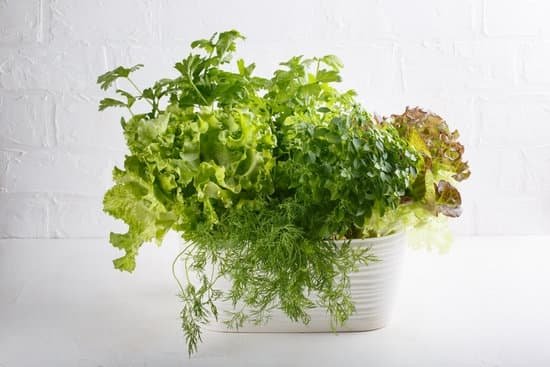Introduction
Onion container gardening is one of the easier forms of vegetable gardening. All you need are some large pots and soil, as well as a supply of onion transplants or onion sets (young onions). To successfully harvest onions, your container must have enough size and depth to accommodate the growth of mature plants. Additionally, you must ensure that your pots receive plenty of sun as well as proper drainage – without these vital conditions, your onions may not grow properly.
When planting your onion sets in the potting soil, make sure they are submerged at least an inch below the surface. They should be spaced between four to six inches apart so that each onion is given ample space to grow. Make sure the area has adequate sunlight (at least 6-8 hours per day) for best results. It’s also a good idea to water frequently but make sure not to overwater, or else the roots may rot and cause bulbs not to form properly. Using mulch such as straw or grass clippings will help keep moisture levels consistent; adding fertilizer may also improve plant vigor over time. Lastly, when it comes time to harvesting your onions, simply pull them up from the base or cut their leaves off at ground level.
Advantages of Onion Container Gardening
Onion container gardening is an excellent way to enjoy the health benefits of fresh onions without taking up too much space. One of the most notable advantages of onion container gardening is that it requires significantly less water than traditional garden beds. The limited space also allows for soil with higher organic matter content, resulting in more flavor and better-looking produce. Onion containers can be easily moved indoors during cold winter months if desired, enabling you to extend the harvest season. Additionally, they allow you to avoid weeds and soil-borne diseases while still providing successful harvests due to quick draining soil and compost-enriched fertilizer mixes. Another advantage is that it can be done on a balcony or rooftop, allowing anyone access to gardening regardless of their living situations. Moreover, smaller labs are much easier to maintain since they take far fewer resources such as time and effort due to their condensed size compared to a large garden bed. Last but certainly not least, they save you money by eliminating the need for expensive pesticides or herbicides.
Container Types for Onion Container Gardening
When it comes to onion container gardening, there are several types of containers that can be used with success. Planting onions in a container is an easy and effective way to grow the vegetable without taking up a lot of space. Common types of containers for planting onions include plastic planters, wooden barrels or boxes, window boxes, hanging baskets, metal buckets, or other small containers. The important aspect when considering the type of container to use is that it has adequate drainage holes and enough depth to accommodate onion roots. Be sure to select a large enough container, as small ones may become root bound quickly and stunt growth. Additionally, move the plants on a regular basis to ensure ample sun exposure as onions begin yellowing depending on their location relative to the light source.
Appropriate Onion Varieties for Container Gardening
When selecting onion varieties for container gardening, it is important to consider how long each variety takes to reach maturity, as well as the size of your containers. For example, if you have smaller containers, varieties with a shorter maturity time such as ‘Ebenezer’ or ‘Gulfkeeper’ are ideal. These onions are ready to be harvested just 4-5 weeks after planting, while longer maturing varieties like ‘Red Zeppelin’ may take up to 10 weeks. In addition to the aforementioned varieties, other great options for container gardening include the thriving sweet onion ‘Vidalia’, red onion cultivar ‘Candy’, and white onion variety ‘White Queen’. All these varieties grow quickly and produce plenty of flavorful onions. Furthermore, if you want your onions to mature earlier in the season than other areas of your garden, consider growing them in containers so that you can introduce them into a heated environment or allow them to experience more sunlight.
Planting and Positioning
Onion container gardening is often a great way for gardeners to have success with the crop without having to dedicate large amounts of space to a traditional garden lush with onions. Container gardening allows onion plants to be spaced tightly together, maximising the yield from a small amount of surface area. In order to give onion plants the best chance of success, it is important that they are planted and positioned correctly in their containers. Onions prefer soil that is neutral in pH as this helps its roots take up nutrients better. A well-drained potting mix is ideal and mix of peat moss, vermiculite, or compost can be added to help improve drainage within wetter soils. Once planted, keep an eye on watering levels as onions are susceptible to both root rot and standing water that could cause their bulbs to rot prematurely. Position the containers so they receive at least 6 hours of direct sunlight each day and make sure not to overcrowd them as this can lead to stunted growth in your onions due to lack of access to light and resources. Finally, avoid using deep pots for onions as shallow ones will more effectively allow for air circulation around the plants’ foliage and reduce any chances of becoming too wet at soil level.
Fertilizing, Watering, and Sun Requirements
Fertilizing: Onions require a balanced fertilizer with an equal mix of nitrogen, phosphorus and potassium. A 10-10-10 fertilizer is ideal for most onion varieties. Apply the fertilizer to the soil once in early spring. This will help to provide additional nutrition as the plants continue to grow.
Watering: Onion containers should be watered regularly to ensure that the soil is moist but not saturated with water. Watering around the base of each plant so as not to wet the actual onion bulb helps prevent any rot or disease. Check the soil about once a week for signs of dryness, and if it does appear dry add water until moisture is established at 2-3 inches deep.
Sun Requirements: Onions need at least 6-8 hours of direct sunlight every day in order for them to reach full maturity and be ready for harvest. Consider setting your container garden in an area that receives a lot of natural sunlight throughout the day, or supplement natural light with artificial lighting using special growing lights such as LED or fluorescent bulbs if needed.
Troubleshooting Common Issues in Onion Container Gardening
One of the most common problems encountered when attempting to grow onions in containers is incorrect soil. Onions grow best in a well-drained, sandy loam with a pH between 6 and 7.5. If there is too much clay or silt in the soil, the onion roots can become waterlogged and rot away. Checking your potting mix before planting will help prevent this problem.
Another issue that can arise while growing onions in containers is insufficient nutrient availability. Despite their small size, onions need plenty of certain nutrients like nitrogen and magnesium to grow strong and healthy. Adding organic matter such as compost to the soil will ensure your container has adequate nutrition for your onions. It may also be necessary to give your container a boost of fertilizer every other week or so during the growing season to keep them healthy and productive.
A third common problem when onion gardening in containers is temperature control. Onions prefer cool weather but cannot tolerate extreme cold or heat for extended periods of time. Placing containers with onions on an outdoor deck that receives several hours of direct sunlight each day can help moderate temperatures during hot summer months, while positioning them near an evergreen bush or south-facing wall will provide some additional warmth during cold spells.
Finally, proper watering technique is essential for successful onion growing in containers. Overwatering leads to root rotting which quickly kills onion plants, while underwatering causes stress that weakens plants and reduces bulb size when harvested. The best practice is to check the soil daily and water only when it begins to feel dry on top -aiming to keep it slightly moist at all times without becoming saturated.
Tips to Maximize Success with Onion Container Gardening
To maximize success with onion container gardening, there are several important tips to consider:
1. Choose a suitable container: An ideal onion container should be at least 6 inches deep and 12 inches wide in order to provide the space necessary for proper root growth. Plastic tubs or wooden boxes work well and will allow the onions plenty of room to grow while still remaining easy to move around.
2. Provide adequate drainage: Poor drainage can lead to root rot, so it’s important to select a pot that has holes at the base or use some type of outlet system in order to keep excess water away from the roots.
3. Use soil mix formulated for containers: A light, loose soil mix is best for containers; look for one that’s specifically designed for potted plants as this will ensure better drainage and fewer nutrient deficiencies than regular garden soil. Be sure it contains compost and fertilizer amendments as well.
4. Select seedlings or sets carefully: Before you plant your onions, look for ones that have healthy stalks and leaves – this shows that they’re more likely to thrive in your container garden than weaker specimens might be.
5. Water and fertilize regularly: In order for onions planted in containers to flourish, they must receive moist soil but not soggy conditions or else their roots could rot; keep an eye on the moisture levels of your soil by using a finger test – if two inches below the surface feels dry then give the area a thorough watering (and don’t forget regular fertilizing too!).
Review
Onion container gardening has quickly become a popular way to grow onions due to the increased convenience and ease of growing that comes with it. Growing onions in containers allows for easy space management and water conservation, meaning you can grow your onions without having to worry about overcrowding your garden or over-watering them. In addition, the containers can be moved around a patio, balcony, or backyard, giving gardeners more control of their environment. Containers also make harvesting easier as you don’t need to dig around roots in order to reach the bulb. Additionally, disease is less likely with raised soil levels inside the container helping to keep moisture away from the stems, increasing their shelf life. Furthermore, onion waste such as skins and leaves can be tossed back into the soil as compost helping them to break down and add nutrients like nitrogen back into the soil resulting in bigger crops next season. Finally, this type of gardening method is great for beginner gardeners or busy professionals who may not have access to a large garden space but still want to partake in growing their own food!

Welcome to my gardening blog! I am passionate about plants and enjoy sharing my knowledge and experiences with others. In this blog, I will write about everything related to gardening, from tips on how to get started to updates on my own garden projects.





